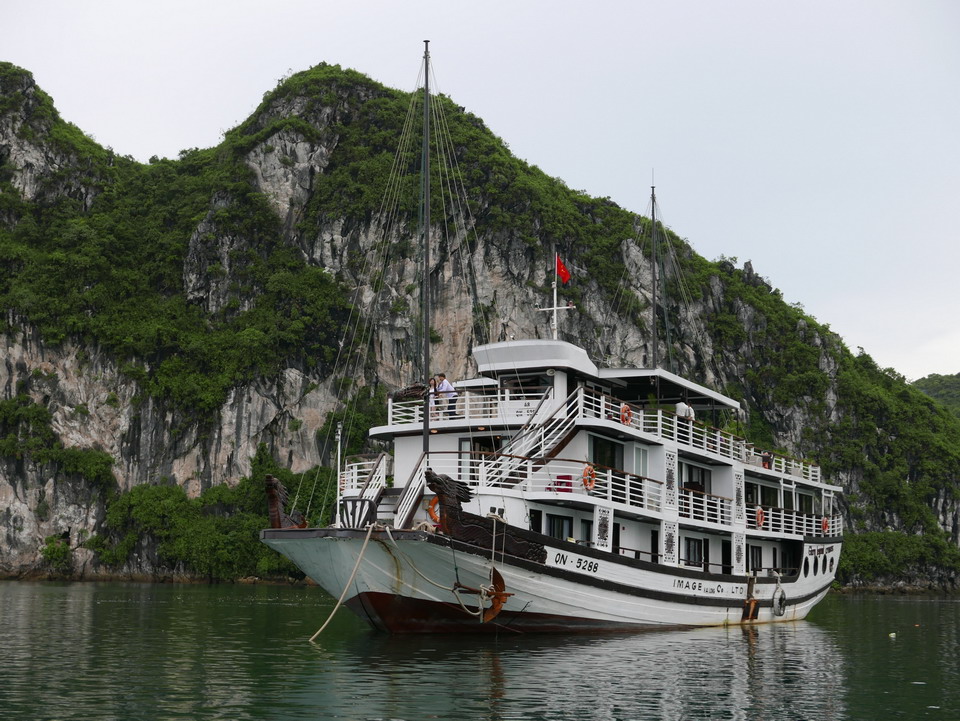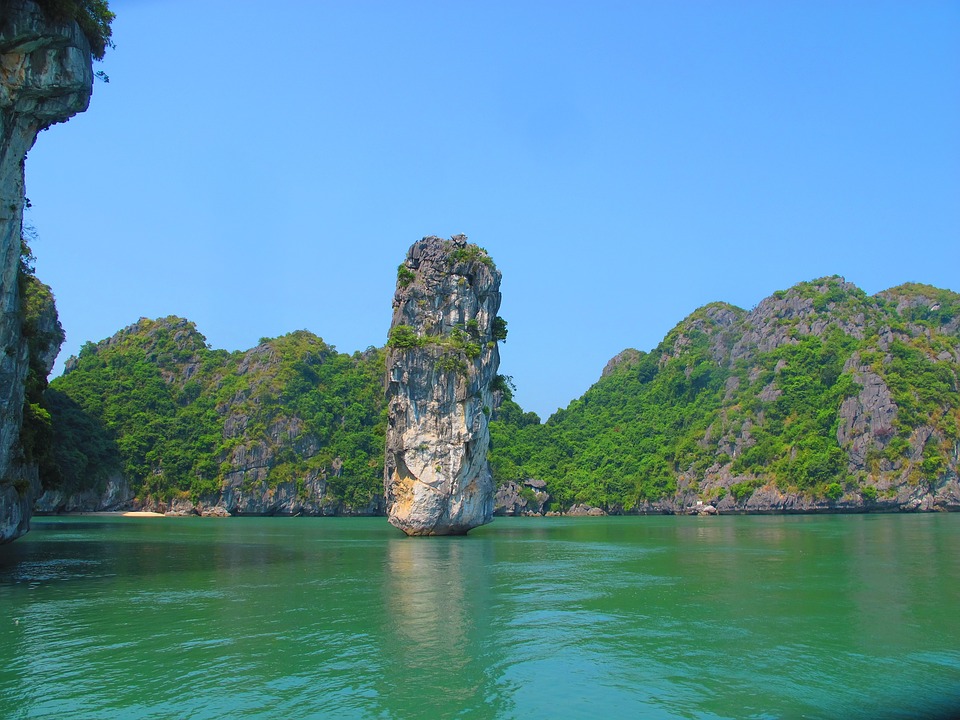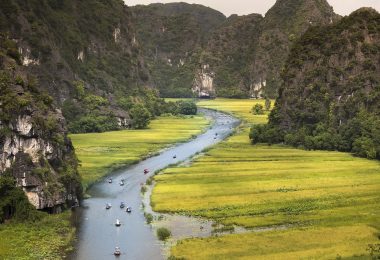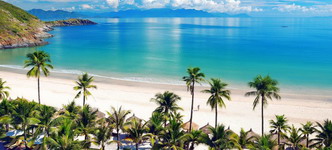The best way to truly experience the Hanoi Old Quarter is on foot. While exploring the latter route, take a break at a local café or a tourist shop in the neighborhood backpacking area. Photographers should leave early and capture the bright colors of the morning sun, highlighting the golden plaster of old buildings and making the colors of the products on the market more vivid.
This route is a large circle clockwise through the old town. The length of the walk will vary depending on your clip and detailed preferences, but overall, you’ll want to spend a few hours.
Hang Da Market and Hang Dieu Street

Hang Dieu
At the intersection of Yen Thai and Hang Da is the old location of Hang Da market, a large local clothing and dry goods market. Unfortunately, the old four-storey golden stone building was recently demolished, and the new Hang Da market will be a sterile shopping mall.
After a quick look, head north on Hang Da – don’t miss the large bird shop with its bamboo cage wall at the northern corner of Hang Da and Hang Dieu.
Further to the north, Hang Da Street became Hang Dieu City. Hang Dieu is traditionally an area that sells cigarettes and pipes; Keep an eye out for the intricately carved colonial buildings on the slopes of Wonder Hill No. 66 and 77 (you’ll have to look up to distinguish them from the concrete piles).
Phung Hung Street

Phung Hung
Phung Hung Street, which runs along the walls of the old city and marks the western edge of the old town, is a remarkable sight for Vietnamese tourists as it has the publishing office of an important communist newspaper at 105 Phung Hung.
Hang Vai

Street Vendor
Hang Vai, roughly translated as “cloth street", is a bamboo district. The bustling exterior of the small sheds is lined with cut bamboo racks, some of which are more than two stories high. This is the raw material for the amazing Dr. Seuss scaffolding that you see on construction sites. Shops also sell “cotton" bamboo cigarette tubes, some of which are quite sophisticated. At the corner of Hang Vai Street and Hang Ga Street in the North-South direction.
Lan Ong Street

Old Quarter Alley
Lan Ong Street, one of the most interesting areas of the old town, is still home to a large Chinese neighborhood that sells herbs and ancient medicines in small shops dating back to the beginning of the district. The best shops are located on the right as you head east. Here you will find strange little furniture with walls arranged in large dark wooden cabinets with small drawers, buckets and boxes, with all the fancy dry goods you have ever seen. Unfortunately, this is where you can buy bear or monkey bladders. The buildings along this short stretch of road are all original buildings from the 17th century. Look for the bustling primary school at 1.40 Lan Ong, which was once home to the area’s Chinese community. Just across the street from the converted townhouse and along the street, look for low roofs and narrow entrances, especially those with moss-covered tile roofs, as these are original Chinese houses.
Hang Duong Street

Hard-working people
Hang Duong Street There are many traditional structures, the most famous of which is the community house on the left as you go north. 38 Hang Duong. It has a beautiful banyan tree in the courtyard and a charming, dark beauty with a smoky interior.
Note: Hang Duong is a hiking area on weekend nights and has become a bustling small market selling tourism goods and local goods. A short detour from Hang Duong to Thanh Ha Communal House in the 13th century, a short walk from Ngo Gach Street . Take a short walk to the east. Continue north of Hang Tang and turn right:
Hang Chieu
Follow Hang Chieu east through the northern end of the old town to the Quang Chuong Gate, the only remaining border crossing of the city’s once-mighty fortress. From here, turn right (south) onto Dao Duy Tu Street and find a small entrance to Huong Nghia Community House on the left, near the corner of Cho Gao Street.
Bach Ma Temple
Bach Ma Temple is located at 76 Hang Buom Street and is open daily from 8 am to 11 am and from 2 pm to 5 pm (until 9 pm on public holidays). Built in 1010 AD, the temple dedicated to the legendary Bach Ma is said to have helped Vietnam’s first king Ly decide where and how to defend his city. Inside the temple is a large courtyard with large red columns and large Buddha statues and altars.
Hang Buom Street

Hang Buom
From Bach Ma Temple, continue east on Hang Buom Street (Canh Buom Street). Once located on a small tributary of the To Lich River, from which goods were transported to the city, Hang Buom was where local merchant ships renovated their ships. Look for many colonial buildings and traditional Vietnamese houses, as well as a community house at 22
Ma May Street
Ma May is the starting point of the most crowded low-cost tourist area of the Old Town. In and between internet cafes and tourist restaurants (mostly in the same place), you will find good examples of traditional and colonial buildings. Huong Tuong Communal House is located at 64 Ma May, and one of the city’s most interesting attractions is at 87 Ma May, a renovated and restored traditional house. Here, a young guide will take you through the building in a traditional ao dai for only 5,000 VND, explaining important details about life in the old town from centuries ago. With meticulous renovations carried out by an organization funded by UNESCO, France, and Canada, this vintage house offers a unique opportunity to get up close and personal with the details of a traditional house in the old town. Also, check out the similarly renovated property at 38 Hang Dao Street.
Hang Bac Street

Hang Bac
If you go west of Hang Bac, you will be in the center of the backpacker area. Here, you are sure to be attacked by street vendors and smugglers from all sides, and you can opt for casual tours to the many shops located along this busy street. Silver Cave means “silver road", and silver today is mostly an item from your pocket that falls into the hands of tour operators, although you can still find a number of manufacturers and sellers of silver (and gold) jewelry.
When you approach the intersection with Dinh Liet Street and look to the right, you will see the large Golden Chapter Theater at number 1. 72 Hang Bac is the stronghold of the French army, which was besieged after the August Revolution in 1945.
In the area, you will find many shopping opportunities and a variety of goods and services. Here you can end your tour or visit another place worth seeing.
Ta Hien Street

Ta Hien
Follow some steps to get to this vibrant street and it is called “No Sleep Street", where everything is going quickly and the atmosphere is always joyful there. Moreover, Ta Hien Street is really well-known for drink places such as: bars, clubs, cafes, or even local breweries. It is most worth visiting at night, you can have a seat for a local craftbeer and a chat with your friends, and even immerse yourself into the vibrant atmosphere there.
Hang Dao

Hang Dao
Just to your right, don’t miss another great example of a restored traditional old townhouse, very similar to the house on Ma May Street (and run by the same group of people). No. 38 Hang Dao is a two-storey house that was once owned by silk traders. The house is quite spacious and sophisticated (silk merchants are very wealthy); You’ll see how an old townhouse was set up, including where the worship area (now the office) was located and where the family lived, cooked, and worked. A helpful guide will guide you for a fee of 20,000 VND (or free if you have a ticket from Ma May Road).
Hang Dao Street stretches to the south and ends at Hang Gai and Dong Kinh Nghia Thuc Square (Bac Ky Nghia Movement Square). Look out over the large ship-shaped building overlooking the square and Hoan Kiem Lake to the south.
Hoan Kiem Lake

Hoan Kiem Lake
Start with a visit to Ngoc Son Pagoda at the northern end of the lake. Cross Mat Troi Moc Bridge to reach the pagoda. From the most prominent point in the city, follow the northern edge of the lake to the west and cross the busy roundabout. This bustling square is known as Dong King Nghia Thuc Square , named after the early 20th-century nationalist movement that would eventually give birth to grassroots communism in Vietnam.
Hang Gai Street
This bustling boulevard marks the southern border of the Old Town. Hang Gai is no longer a hemp shop (in the 19th century there were also printing houses and bookstores on the street), but was surrounded by fashion shops, galleries and silk tailors. Just a few hundred meters west of the roundabout (on the left), you will see a large banyan tree in front of the former famous community house at 85 Hang Gai. This tree is one of the most beautiful specimens of the ancient banyan tree in the city, a perfect example of nature’s adaptability, as the roots of the heavy tree split into two large boulders, and builders have been building around this ancient tree for centuries. The view resembles a small shrine, with incense sticks seasoned between the knobs of the tree and rice whiskey offerings lined up along the stump.
Don’t forget to regularly follow our Facebook page and Hanoi tours for more interesting information about traveling to Hanoi and to book Hanoi tours at the best prices.



















































































